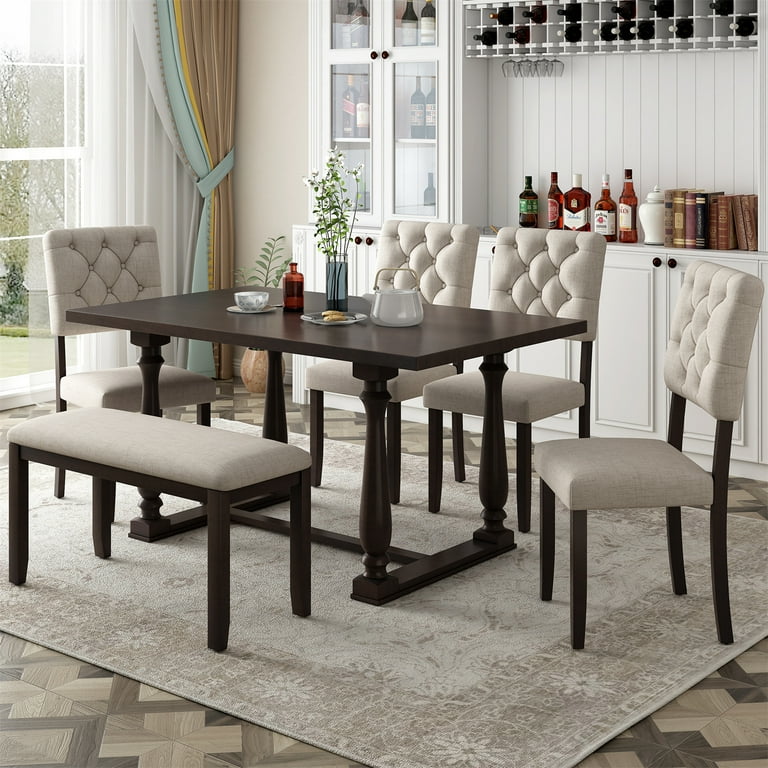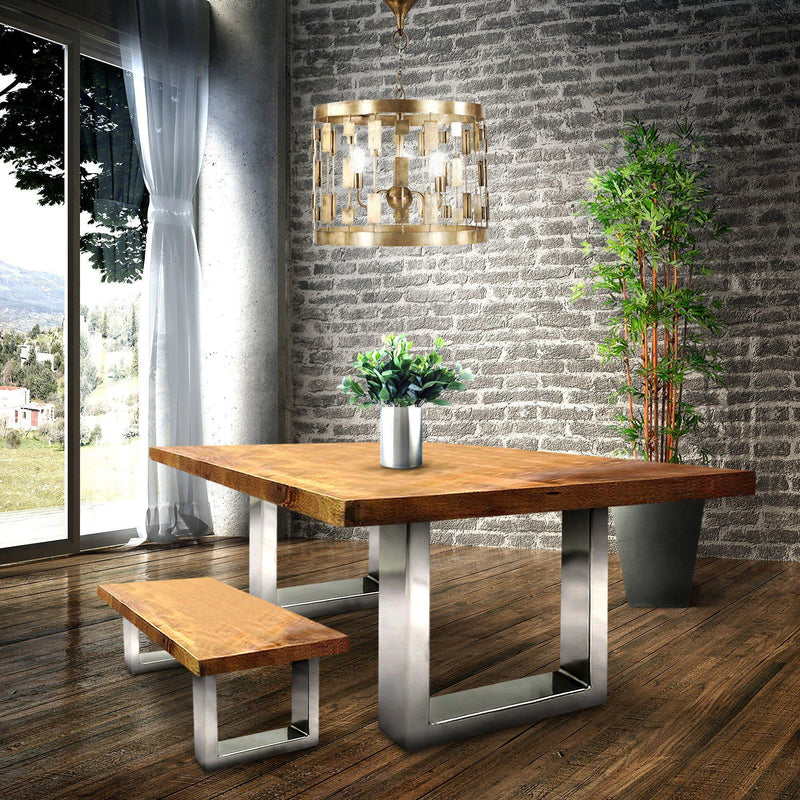Upgrade Your Furniture with Custom Dining Room Table Legs
Upgrade Your Furniture with Custom Dining Room Table Legs
Blog Article
From Standard to Modern: Find the Ideal Dining-room Table Legs for Your Design
While classic styles such as cabriole and transformed legs evoke a sense of ageless sophistication, contemporary designs like hairpin and geometric choices provide an opportunity for striking visual interest. As you think about these components, the concern remains: exactly how can you flawlessly integrate these diverse leg designs to develop an unified dining experience?
Understanding Table Leg Styles
The variety of eating area table leg designs can considerably influence both the aesthetics and functionality of the space. Each leg style adds one-of-a-kind functional attributes and aesthetic aspects, accommodating diverse style choices and usage demands. Comprehending these designs is critical for selecting the right eating table that straightens with your overall interior style vision.
For example, tapered legs offer a tidy, traditional look that can enhance a room's style, while pedestal bases provide stability and optimize legroom, making them optimal for smaller spaces. Hairpin legs, a trademark of mid-century modern layout, present an industrial style, allowing for an airy, open feeling. Trestle legs evoke rustic beauty, offering durable support and a feeling of timelessness.
Wood legs can bring warmth and structure, whereas steel options usually convey a streamlined, modern vibe. Eventually, understanding table leg styles is necessary for creating a cohesive eating location that mirrors personal design while ensuring functionality and comfort.
Traditional Table Leg Options
When choosing dining-room table legs, traditional choices frequently personify timeless style and workmanship. These styles mirror a rich heritage and a dedication to top quality, making them suitable for those that value classic looks.
Among the most renowned conventional leg designs is the cabriole leg, identified by its stylish curved shape. This layout often features decorative carvings and is most generally found in Queen Anne and Chippendale furnishings. One more prominent choice is the turned leg, which boasts a series of smooth, rounded forms that supply a timeless look while maintaining security.
Additionally, the straight leg, while easy, uses a basic and sturdy structure that can blend perfectly with a range of tabletop styles. For those attracted to ornate describing, claw-and-ball feet legs stimulate a sense of grandeur and can function as a sensational focal point in any type of dining space.
Lastly, pedestal bases, although not strictly legs, supply a different conventional alternative that enables sufficient legroom and can be perfectly sculpted. Each of these typical leg styles adds to the overall atmosphere of a dining-room, marrying feature with visual allure.

Modern Table Leg Designs
Modern table leg styles use a diverse variety of styles that stress innovative products and clean lines. These designs frequently focus on functionality while working as striking prime focus within a dining space. Minimal visual appeals prevail, with legs crafted from products such as metal, glass, and crafted wood, which add to a modern and airy feel.
One popular design is the hairpin leg, identified by its slender, tapered framework that gives security without overwhelming the table top (dining room table legs). This style is frequently found in mid-century contemporary furnishings and can effortlessly enhance different dining table shapes. Another trend is making use of geometric shapes, where legs might tackle unbalanced or angular kinds, adding aesthetic passion and a touch of artistry

Mixing Styles for Distinct Rooms
Commonly, home owners seek to create special eating rooms that reflect their personal style by mixing different layout aspects. This approach enables the unification of diverse aesthetics, causing a harmonious yet unique atmosphere. For example, matching a rustic wooden table with streamlined, modern steel legs can produce a distinctive comparison that elevates the area's general appeal.
Furthermore, integrating vintage table legs with contemporary tabletops can evoke a sense of history while maintaining a modern perceptiveness. Such combinations not just showcase specific taste but additionally encourage creative thinking, enabling homeowners to curate a space that really feels both personal and welcoming.
Color plays a crucial function in this mixing process; picking table legs that complement or comparison with the existing color pattern can boost visual passion. Whitewashed legs can soften the daring of a dark table surface, producing a well balanced aesthetic.
Tips for Selecting the Right Legs
Selecting the right table legs is use this link important for achieving both capability and aesthetic allure in your eating space. Begin by thinking about the general design of your space. Conventional setups benefit from legs that feature complex makings or turned designs, while modern spaces may require streamlined, minimal styles.
Following, evaluate the elevation and security of the legs. dining room table legs. Basic eating tables vary between 28 to 30 inches in height, so make certain the legs enhance this dimension for comfort. In addition, robust products, such as wood or steel, can boost security and longevity
Assess the leg form too-- alternatives consist of right, tapered, or stand layouts. Straight legs offer a classic appearance, while tapered legs can add a touch of beauty. Pedestal bases supply adequate legroom and are ideal for smaller rooms.
Conclusion
In summary, selecting the excellent dining-room table legs calls for cautious consideration of both contemporary and traditional designs. Traditional alternatives such as cabriole and transformed legs supply classic elegance, while modern-day layouts like barrette and geometric shapes offer a modern touch. By balancing leg style, height, and material with the total décor, a cohesive and welcoming ambience can be accomplished. Eventually, the chosen table legs need to show the desired aesthetic, enhancing the eating experience within the room.
The variety of Get More Info eating space table leg designs can significantly affect both the aesthetics and capability of the space. Inevitably, comprehending table leg styles is important for producing a cohesive dining area that reflects individual redirected here design while guaranteeing functionality and comfort.One of the most iconic traditional leg designs is the cabriole leg, defined by its graceful curved shape. Straight legs supply a traditional appearance, while tapered legs can include a touch of beauty.In recap, selecting the optimal dining room table legs needs mindful factor to consider of both modern-day and conventional styles.
Report this page